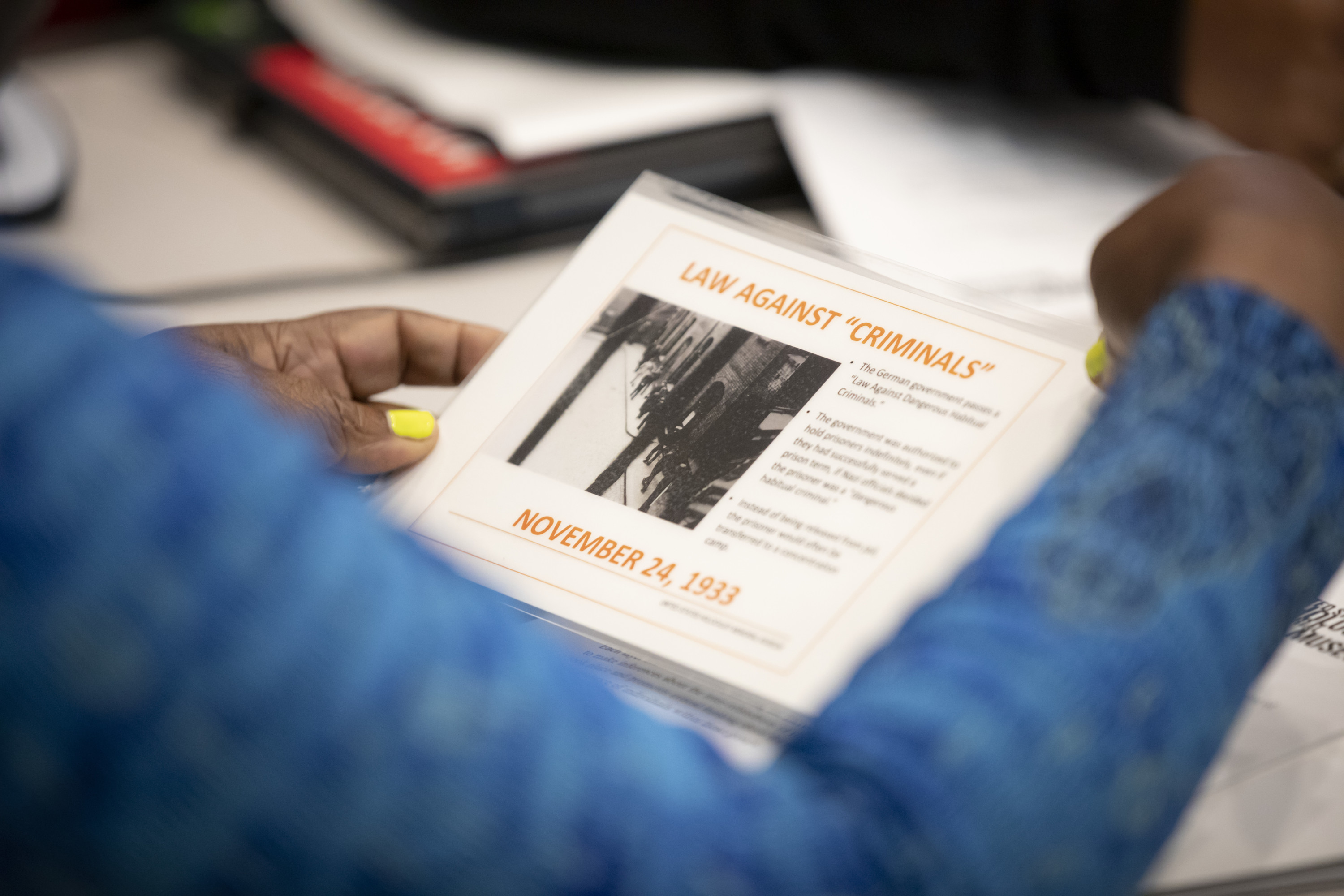US Holocaust Memorial Museum educators and historians created these lesson plans for use in secondary classrooms. Click on a lesson plan to see its recommended grade level, subjects covered, and time required to complete. To explore lessons organized by theme, visit Teaching Materials by Topic.
-
Lesson: Introduction to the Holocaust (One-Day Lesson)
This one-day lesson provides an introduction to the Holocaust by defining the term and highlighting the story of one Holocaust survivor, Gerda Weissmann.
-
Lesson: Overview of the Holocaust (Two- and Four-Day Lessons)
This lesson is designed as both a two-day and four-day unit. In both versions, students analyze how and why the Nazis and their collaborators persecuted and murdered Jews as well as other people targeted in the era of the Holocaust between 1933 and 1945.
-
Lesson: Holocaust Timeline Activity
This lesson is structured around a multi-layered wall timeline that encourages critical thinking about the relationship between Nazi policy, World War II, historical events, and individual experiences during the Holocaust.
-
Lesson: Teaching with Holocaust Survivor Testimony
Students will examine Holocaust survivor testimonies as both personal memories and as deliberately-created historical records, and will evaluate how the Holocaust affected the lives of individuals, as well as the role of memory in our understanding of history.
-
Lesson: The Path to Nazi Genocide
Organized around a Museum-produced 38-minute Documentary, The Path to Nazi Genocide, these discussion questions provide students with an introduction to the history of the Holocaust.
-
Lesson: History of Antisemitism and the Holocaust
This lesson focuses on the history of antisemitism and its role in the Holocaust to better understand how prejudice and hate speech can contribute to violence, mass atrocity, and genocide. Learning about the origins of hatred and prejudice encourages students to think critically about antisemitism today.
-
Lesson: Exploring Pre-World War II Jewish Life
In order to better understand what Jewish cultural and communal life was like in Europe before World War II, students search the Museum’s digital archive collections, select photographs depicting pre-war Jewish life in Europe, analyze them, and research the town(s) where the photos were taken.
-
Lesson: Exploring Holocaust-era Diaries
Students will examine Holocaust-era diaries as both historical and as deliberately-created literary texts, and will understand how the Holocaust affected the lives of the individuals.
-
Lesson: Nazi Racism
Racism fueled Nazi ideology and politics. To critically analyze actions taken by Nazi Germany and its collaborators requires an understanding of the concept of racism in general and Nazi racial antisemitism in particular.
-
Lesson: Understanding Nazi Symbols
By focusing on the history and meaning of the swastika, the lesson provides a model for teachers to use when examining the origins of symbols, terms, and ideology from Nazi Germany and Holocaust-era fascist movements that students are seeing in contemporary American culture, promoting critical historical thinking and analysis.

